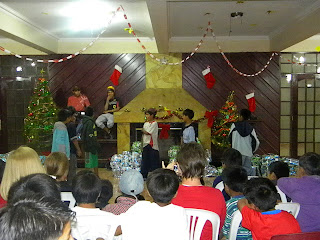A recent article in the Cochabamba newspaper spoke of how the situation of Cleferos has not changed since the original study in 2006. What is a Clefero? Someone who huffs Clefa, a powerful adhesive.
 |
| Photo from the newspaper. |
I immediately recognized the group in the photo. A group of homeless teens that live in a plaza that I pass by so often on my way to the market. I've taken a couple of groups out to share dinner and small talk with them in the past. I've watched them share small plates of food, and I've watched them beat each other to a bloody pulp.
The newspaper article explained that there are approximately 450 children addicted to Clefa in Cochabamba. Its attraction? Cheap. Makes you feel warm. Kills hunger pains.
Easy to see why it is popular.
Clefa is powerful. The huffer usually has a small bottle or just the cap to a soda bottle with their stash. It is kept in hand, rolled in the shirt cuff, or even rolled in the shirt collar for constant access, although it is easily smelled by anyone just passing by.
In addition to being highly addictive, Clefa is also very quickly the cause of irreversible brain damage.
Another study that I found from 2002 showed Clefa addicts in Bolivia equal the number of Marijuana and Cocaine addicts, each coming in around 40,000 (that's about .5% of the total population).
Another study that I found from 2002 showed Clefa addicts in Bolivia equal the number of Marijuana and Cocaine addicts, each coming in around 40,000 (that's about .5% of the total population).
 |
| Photo I took in 2008. |
The above photo is one that I took in 2008 less than 2 blocks from the plaza where the Cleferos live. The boy is sleeping in the street (behind him is the step up the the sidewalk).
 |
| Photo I took in 2008 |
 |
| Photo I took in 2008 |
 |
| Photo I took in 2008 |
 |
| Photo I took in 2008 |
Above are some pictures that I took of children (except the one in the sugar sacks is an adult) who live and sleep on the streets of Cochabamba.
 |
| Photo I took in 2008 |
Not really the place I want to spend my nights.
The expert interviewed in the article drew things to a close by pointing out that we shouldn't just worry about this statistic, but keep in mind that Bolivia holds the number 2 spot in Latin America (including Central America) and the number 1 spot in South America for its child mortality rate in children under the age of 5 with 25,000 children dying each year.
The expert went on to slam the organizations and institutions that receive funding to work with children saying that they spend more on staff salaries and maintaining their status than on their real objectives, "Si esas instituciones hicieran lo que deberían y dicen hacer, no habrían niños en la calle."--"If these institutions did what they should do and say that they do, there would not be children in the street."
I'm holding my boys a little tighter tonight and thanking God that they aren't out there anymore.
I'm holding my boys a little tighter tonight and thanking God that they aren't out there anymore.



















